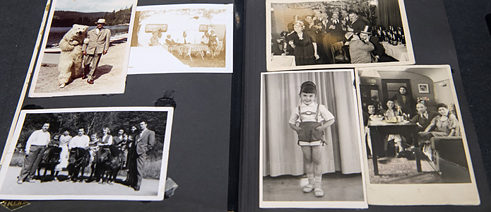Romani, the language of the Sinti and Roma
Preferably only spoken

Many Sinti and Roma in Germany do not want their language – Romani – to be taught at school or studied by academics. There are tendencies towards more openness, however – especially in an attempt to preserve this minority language.
There are between eight and twelve million Sinti and Roma in Europe, of which between 70,000 and 150,000 are currently living in Germany. The exact number is not known because no official surveys are carried out in many countries. Sinti and Roma are recognized as a national minority in Germany, just like Danes, Frisians and Sorbs.
There is very limited knowledge of the life and traditions of the Sinti and Roma, as far as both the past and the present are concerned. Almost no written sources of their own exist, which means that research is reliant on information provided by non-Roma. Thanks to linguistic studies, it is regarded as certain that the ancestors of the Sinti and Roma people living in Europe today originally came from India. Most Roma living in German-speaking countries call themselves Sinti. This has been their home since the early fifteenth century. Many of the Roma living in Germany migrated to the country from Southeast Europe after being freed from serfdom in the 1870s or as guest workers in the 1960s and 1970s. They were followed after 1990 by refugees, for example from the former Yugoslavia or Romania.
All Romani speakers have at least two languages
In Europe, the Roma were “foreigners”, distinct from the local inhabitants not least on account of their own language, Romani, which is related to the Indian language of Sanskrit. For the identity of Roma groups it is important for them to have their own language, yet Romani is not an official language in any European country. Various dialects of Romani – there are thought to be over 100 – have evolved over the centuries as its speakers have migrated across different countries and settled in the various regions in which they live today. For example, one dialect is known as “German Romani”, “Hungarian Romani” being another. Even speakers of distant dialects can communicate despite no standardized version of the language having ever evolved, let alone a generally applicable system of grammar. Sinte Romani, the language spoken by the Sinti in Germany, is a particular variant of Romani with a strong German influence.All Romani speakers are bilingual because they always speak also the local language of the country in which they are living. However, many Roma have lost their own language over the course of their long history, primarily as a result of social marginalization and attempts at forced assimilation. It is estimated that roughly three quarters of Roma today speak Romani as their native tongue. The peculiarity of Romani is that it is first and foremost an oral language. Projects and attempts to establish a written or standardized form of Romani have been and continue to be pursued in various European regions, such as in Austria, as well as in the Soviet Union and Poland. However, these were all conducted exclusively by non-Roma, and for the most part did not actively involve Sinti and Roma themselves. Today a larger-scale project is underway at the University of Graz.
Distrust of academics
Sinti and Roma have had and still have considerable reservations about sharing their language with others, particularly in Germany because race researchers during the Nazi era had also learnt Romani in order to be better able to question and spy on Sinti and Roma. As a result, there is very great distrust of academics when it comes to revealing anything about themselves and their groups. Romani is to be spoken above all within the minority group.That said, there have also been attempts since the 1990s – now principally within the minority itself – to preserve the language to a greater extent. A written form is still a matter of some controversy, however. Romani is neither taught at schools nor a subject that can be studied at universities, and many representatives of the minority do not want to see Romani taught and learnt in the state education system. Other groups meanwhile are keen to make the language more publicly available and widely known in order to preserve it – not least on the Internet. In mid-2016 the Council of Europe decided to establish the “European Roma Institute for Arts and Culture” (ERIAC) in Berlin. With projects all over Europe, its aim is to help overcome prejudice against Sinti and Roma.
Sinti and Roma authors
The traditional art of storytelling is of particular importance and has an impact both within the communities themselves and externally. Members of the Sinti and Roma groups have produced literature for some time now, though it tends to be written in the country’s local language rather than in Romani. Since the 1980s, and especially since the turn of the millennium, there has been a considerable number of autobiographical records from genocide survivors and their descendants in German. In some cases they were translated from Romani into German, as was the case with the contributions to a volume entitled … weggekommen. Zeitzeugenberichte von Sinti und Roma (i.e. .... misplaced. Contemporary witness accounts from Sinti and Roma) that was edited by Daniel Strauß, chairman of the Baden-Württemberg branch of the Association of German Sinti and Roma.The signing of the Framework Convention for the Protection of National Minorities in Europe in 1995 placed support for the culture of the Sinti and Roma on the agenda. The Convention has been in force in Germany since 1998, but has only been implemented in a few of the country’s states, and in different ways, for example in Baden-Württemberg, Schleswig-Holstein and Hesse. In Baden-Württemberg, for instance, a treaty between the state and representatives of German Sinti and Roma was signed in 2013 for the first time by the state premier Winfried Kretschmann and Daniel Strauß.